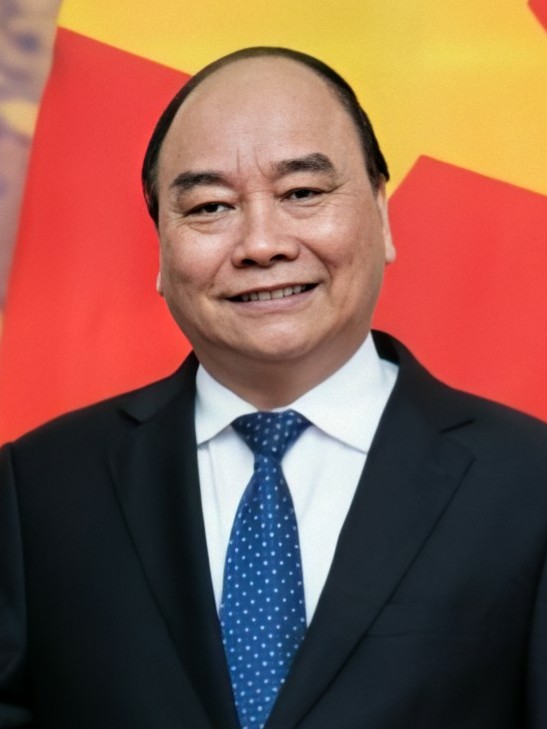On November 12, Prime Minister Jacinda Ardern will be heading offshore to attend both the annual East Asia Summit in Cambodia (EAS), and the APEC Economic Leaders Week in Thailand. While in the region, Ardern, along with Trade Minister Damien O’Connor, will lead a business delegation to Vietnam, visiting both Ha Noi and Ho Chi Minh City.
Here are some key points to understand about Vietnam:
New Zealand and Vietnam relations
On July 22, Prime Minister Jacinda Ardern and Vietnamese Prime Minister Nguyễn Xuân Phúc announced the two countries would be elevating their bilateral relationship to a strategic partnership.
“The relationship between New Zealand and Vietnam has grown a lot in recent years, particularly in trade and people-to-people connections,” Ardern said at the time.
2020 was also the year the two countries marked 45 years of diplomatic relations.
Read more about the strategic partnership here: Vietnam and New Zealand announce strategic partnership
President Nguyễn Xuân Phúc
In Vietnam, a one-party state, the president acts as head of the state, representing the country externally, and is one of the country’s three top leaders. The others are the prime minister as head of government and the general secretary of the Communist Party of Vietnam.

Vietnam president President Nguyễn Xuân Phúc. Image: Wikimedia Commons
President Phúc previously acted as a provincial governor and deputy prime minister (visiting New Zealand in that role in 2012), before his appointment by Vietnam’s National Assembly as Prime Minister in 2016. He was elected president by the National Assembly in April 2021.
Over his political career, he’s been involved with Vietnam’s participation in the CPTPP, tensions around developments in the South China Sea and the Mekong River, and the handling of the COVID-19 pandemic.
Buyers and sellers are turning to online shopping
Vietnam’s population is a tech-savvy one, especially when it comes to the younger generations. In urban areas, around 95 percent of people have cellphones, while 69 percent of people living rurally have a phone.
With growing access to the internet and a growing middle class, online shopping is on the rise - particularly when it comes to clothes and footwear - and Vietnam’s e-commerce industry is hot on its heels.
In the 2019 e-Conomy SEA report, commissioned by Google and Temasek, Vietnam’s e-commerce market is expected to expand by 43 percent between 2015 and 2025 – growth in line with the government’s plan for the industry to reach US$35 billion, with more than half of the population shopping online by the end of 2025.
Vietnam’s smartphone success
Increasingly often, when you look down at your phone, it’s likely to be partly or wholly made in Vietnam.
Most of Samsung’s global supply of phones comes from their factories in Vietnam, while LG has moved its entire smartphone production line from South Korea to Vietnam. Google shifted its Pixel smartphone production from China last year.
Apple has also been moving its production to Vietnam (alongside India) too. Analysis from JP Morgan estimates that "Apple will relocate 20 percent of iPad, 5 percent of MacBooks, 20 percent of Apple Watch, and 65 percent of Air Pods to be manufactured in Vietnam by 2025".
Vietnam has increasingly been seen as a way for large corporations to diversify their supply chains, particularly as China – a major centre for production – has proven increasingly difficult as a market due to factors such as its ongoing strict Covid prevention measures and geopolitical tensions.

A number of smartphone producers - including Samsung - have turned to Vietnam for production. Photo by Ravi Sharma on Unsplash
Cheers to a growing industries
Beer: Sit down and crack open a cold one – you’d be joining in with Vietnam’s enthusiastic population of beer drinkers.
By 2035, estimates put Vietnam’s countrywide beer consumption at 5.6 billion litres - in 2019, this figure was 4.6 billion litres. Vietnam is a leader in beer consumption compared to other ASEAN nations and in 2022 the country’s beer consumption was 2.2 percent of the global market.
Coffee: Vietnam is a powerhouse in the global coffee production world - with robusta beans in particular - and is the second-largest producer and exporter of coffee in the world (Brazil is the largest). In the 2021-2022 year, Vietnam exported more than 1.73 million tons of coffee - its biggest export amount in four years.
Garments: Alongside its beverage exports, Vietnam is also now the second-largest garment exporter in the world, after moving ahead of Bangladesh's export volumes last year. Following global lockdowns over 2020 and 2021, Vietnam saw demand increase in its industry, with reports indicating the boost came from Western nations ending social distancing amid economic recovery.
This article was first published in July 2020 and was been updated in November 2022.
- Asia Media Centre
